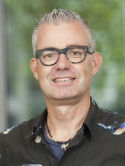Pathobiological signatures of dysbiotic lung injury in pediatric patients undergoing stem cell transplantation Journal Article
| Authors: | Zinter, M. S.; Dvorak, C. C.; Mayday, M. Y.; Reyes, G.; Simon, M. R.; Pearce, E. M.; Kim, H.; Shaw, P. J.; Rowan, C. M.; Auletta, J. J.; Martin, P. L.; Godder, K.; Duncan, C. N.; Lalefar, N. R.; Kreml, E. M.; Hume, J. R.; Abdel-Azim, H.; Hurley, C.; Cuvelier, G. D. E.; Keating, A. K.; Qayed, M.; Killinger, J. S.; Fitzgerald, J. C.; Hanna, R.; Mahadeo, K. M.; Quigg, T. C.; Satwani, P.; Castillo, P.; Gertz, S. J.; Moore, T. B.; Hanisch, B.; Abdel-Mageed, A.; Phelan, R.; Davis, D. B.; Hudspeth, M. P.; Yanik, G. A.; Pulsipher, M. A.; Sulaiman, I.; Segal, L. N.; Versluys, B. A.; Lindemans, C. A.; Boelens, J. J.; DeRisi, J. L.; & the Pediatric Transplantation and Cell Therapy Consortium |
| Article Title: | Pathobiological signatures of dysbiotic lung injury in pediatric patients undergoing stem cell transplantation |
| Abstract: | Hematopoietic cell transplantation (HCT) uses cytotoxic chemotherapy and/or radiation followed by intravenous infusion of stem cells to cure malignancies, bone marrow failure and inborn errors of immunity, hemoglobin and metabolism. Lung injury is a known complication of the process, due in part to disruption in the pulmonary microenvironment by insults such as infection, alloreactive inflammation and cellular toxicity. How microorganisms, immunity and the respiratory epithelium interact to contribute to lung injury is uncertain, limiting the development of prevention and treatment strategies. Here we used 278 bronchoalveolar lavage (BAL) fluid samples to study the lung microenvironment in 229 pediatric patients who have undergone HCT treated at 32 children’s hospitals between 2014 and 2022. By leveraging paired microbiome and human gene expression data, we identified high-risk BAL compositions associated with in-hospital mortality (P = 0.007). Disadvantageous profiles included bacterial overgrowth with neutrophilic inflammation, microbiome contraction with epithelial fibroproliferation and profound commensal depletion with viral and staphylococcal enrichment, lymphocytic activation and cellular injury, and were replicated in an independent cohort from the Netherlands (P = 0.022). In addition, a broad array of previously occult pathogens was identified, as well as a strong link between antibiotic exposure, commensal bacterial depletion and enrichment of viruses and fungi. Together these lung–immune system–microorganism interactions clarify the important drivers of fatal lung injury in pediatric patients who have undergone HCT. Further investigation is needed to determine how personalized interpretation of heterogeneous pulmonary microenvironments may be used to improve pediatric HCT outcomes. © The Author(s) 2024. |
| Keywords: | adolescent; child; human tissue; preschool child; school child; child, preschool; antibiotic agent; human cell; major clinical study; busulfan; fludarabine; validation process; cytarabine; metabolism; immune system; gene expression; lipid; inflammation; cohort analysis; alkylating agent; antifungal agent; cyclophosphamide; hemoglobin; melphalan; stem cell transplantation; hematopoietic stem cell transplantation; pathology; thiotepa; immunology; antiinfective agent; disease severity; whole body radiation; infant; microorganism detection; cell damage; comorbidity; lung; graft versus host reaction; hematopoietic cell; thorax radiography; antivirus agent; microenvironment; microbiology; fatty acid; serology; oxidative phosphorylation; cytomegalovirus; clofarabine; respiratory virus; carbohydrate; antimetabolite; virus detection; eukaryote; fatty acid synthesis; respiratory epithelium; lung lavage; medical history; bone marrow depression; adverse event; lung injury; microflora; bronchoalveolar lavage fluid; microbial community; in-hospital mortality; microbiota; gluconeogenesis; amino acid metabolism; multiplex polymerase chain reaction; immune status; microbiome; rhinovirus; assisted ventilation; bacterial overgrowth; metagenomics; humans; human; male; female; article; human herpesvirus 6; differential gene expression; dysbiosis; cells by body anatomy; influenza c virus; infectious agent; pediatric patient; kegg; microbial interaction; high flow nasal cannula therapy; influenza c; lung microbiota; neutrophilic inflammation |
| Journal Title: | Nature Medicine |
| Volume: | 30 |
| Issue: | 7 |
| ISSN: | 1078-8956 |
| Publisher: | Nature Publishing Group |
| Date Published: | 2024-07-01 |
| Start Page: | 1982 |
| End Page: | 1993 |
| Language: | English |
| DOI: | 10.1038/s41591-024-02999-4 |
| PUBMED: | 38783139 |
| PROVIDER: | scopus |
| PMCID: | PMC11271406 |
| DOI/URL: | |
| Notes: | Article -- MSK Cancer Center Support Grant (P30 CA008748) acknowledged in PubMed and PDF -- Source: Scopus |




